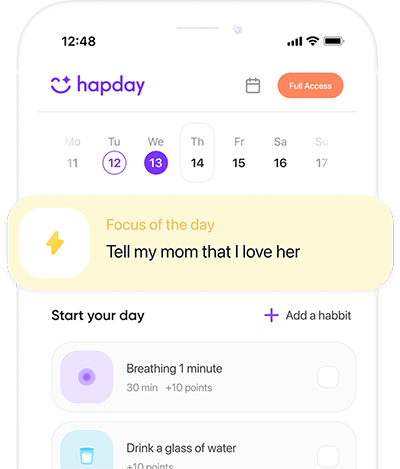Table of Contents
- Understanding PTSD and the Role of Journaling
- Types of Journaling for PTSD
- Overcoming Barriers to Journaling
- The Science Behind Journaling and PTSD
- Integrating Journaling into PTSD Treatment
- Practical Tips for Successful Journaling
- Conclusion
Dealing with Post-Traumatic Stress Disorder (PTSD) is often overwhelming, as it comes with its share of flashbacks, anxiety, and a range of negative emotions. You may find yourself caught in a cycle of reliving the traumatic event or avoiding situations that bring back harsh memories. Fortunately, there are therapeutic methods to manage these symptoms, and one gentle yet powerful tool is journaling.
Journaling isn’t just about jotting down your day—it’s a way to self-reflect, release emotions, and gradually work through your trauma. In this article, we’ll dive into several journaling techniques tailored for managing PTSD, backed by research, and packed with practical tips to help you seamlessly embrace journaling in your life.
Understanding PTSD and the Role of Journaling
PTSD touches the lives of millions, impacting about 3.5% of U.S. adults each year. It manifests as intrusive thoughts, flashbacks, and intense emotional distress. Journaling steps in as a therapeutic practice with a long and well-documented history.
Why Journaling?
Journaling stands out in mental health care for its profound therapeutic value. A study in the Journal of Traumatic Stress underscores its ability to considerably alleviate PTSD symptoms through expressive writing (Smyth et al., 2008). Here’s how journaling works its magic:
- Emotional Release: Putting your feelings on paper can unburden your mind.
- Cognitive Processing: It helps in reorganizing thoughts and offers new perspectives on trauma.
- Trigger Identification: Regular journaling can spotlight patterns or triggers that bring on PTSD symptoms.
Types of Journaling for PTSD
Finding the right journaling technique can be a personal journey. Here are some approaches that are particularly beneficial for managing PTSD:
1. Expressive Writing
Step into the world of expressive writing. Here, the focus is on unraveling your deepest thoughts and emotions tied to the trauma.
How to Practice:
- Dedicate 15-30 minutes daily to write freely about the trauma.
- Let go of concerns about grammar or structure—focus on honesty instead.
Benefits:
Research in the American Journal of Psychiatry found participants experienced enhanced well-being and reduced symptoms over time (Sloan et al., 2018).
2. Gratitude Journaling
Gratitude journaling flips the narrative by spotlighting positive facets of life, fostering a mindset shift from negativity.
How to Practice:
- Jot down three things you’re grateful for each day.
- Elaborate on why these aspects matter to you.
Benefits:
In a Behavioral Research and Therapy study, gratitude journaling was linked to increased emotional resilience and less severe PTSD symptoms (Kashdan et al., 2006).
3. Thought Records
This cognitive-behavioral approach helps challenge and reshape negative thought patterns.
How to Practice:
- Identify troubling thoughts.
- Weigh evidence that supports or challenges these thoughts.
- Craft a balanced outlook that’s realistic and compassionate.
Benefits:
Thought records can lessen anxiety by reshaping cognitive patterns (Beck et al., 2009).
4. Trauma Narratives
Writing your trauma narrative involves breaking down the event into structured parts, assisting in processing the experience.
How to Practice:
- Detail the event in phases, starting with the facts.
- Gradually include emotions and reflections with each session.
Benefits:
This method can lessen the emotional weight of trauma memories (Pennebaker & Seagal, 1999).
5. Mindfulness Journaling
Combine mindfulness with writing for increased awareness and acceptance of your thoughts and emotions.
How to Practice:
- Begin with deep breathing or a short mindfulness exercise.
- Write about your current thoughts and feelings with openness and without judgment.
Benefits:
Mindfulness can enhance emotional regulation, a key aspect in reducing PTSD symptoms (Polusny et al., 2015).
Overcoming Barriers to Journaling
Starting a journaling practice might feel daunting. Here’s how to tackle common hurdles you might face:
Barrier 1: Fear of Reliving Trauma
Strategy: Begin with less intense prompts like writing about daily moments of joy, easing into tougher topics.
Barrier 2: Lack of Motivation or Energy
Strategy: Set achievable targets—write for a mere five minutes, perhaps before bed.
Barrier 3: Perfectionism
Strategy: Reassure yourself that journaling isn’t about creating a masterpiece but about personal expression.
Barrier 4: Privacy Concerns
Strategy: Safeguard your writing with digital apps offering password protection or choose a safe storage spot.
The Science Behind Journaling and PTSD
Journaling’s impact on mental health is strongly supported by research. Studies reveal its ability to improve immune function and emotional health, significantly helping those with PTSD.
Neurophysiological Effects
Engaging in expressive writing activates the prefrontal cortex—key for emotional regulation, aiding trauma processing (Lieberman et al., 2007).
Emotional and Cognitive Benefits
Journaling promotes cognitive restructuring and pushes individuals to adopt healthier coping strategies.
In a study by Sloan et al. (2015), participants practicing expressive writing saw marked reductions in PTSD and depressive symptoms.
Integrating Journaling into PTSD Treatment
While journaling isn’t a replacement for professional therapy, it complements treatments like cognitive-behavioral therapy (CBT) or eye movement desensitization and reprocessing (EMDR) well.
Combining Journaling with Therapy
Therapists often integrate journaling exercises between sessions, helping clients reflect and solidify therapeutic progress.
Self-Directed Journaling
For those preferring self-help, journaling can be part of a larger self-care plan, paired with relaxation practices and healthy lifestyle choices.
Practical Tips for Successful Journaling
For journaling to truly aid PTSD, here are some tips:
1. Create a Safe Environment
Find a peaceful spot that feels comfortable and free of distractions.
2. Set Regular Times
Consistency is key—embed journaling in your routine, perhaps a morning ritual or a pre-sleep wind-down.
3. Use Prompts
To jump-start your writing, prompts such as “When did I last feel at peace?” can guide you.
4. Embrace Imperfection
Remember, there’s no right or wrong in journaling. Allow yourself space to be rough and real.
5. Reflect and Review
Revisit your entries, noting progress and areas for further growth.
Conclusion
While navigating PTSD, journaling can be a lighthouse guiding emotional and cognitive healing. It provides a private, reflective space to express, process, and ultimately transform trauma. Not a substitute for professional care, yet a powerful complement—through journaling, one uncovers pathways to resilience and wellness.
By giving voice to experiences through writing, you empower your own healing journey, setting the stage for a mindful and healthier future.


This is an eye-opener! I never thought journaling could be so beneficial for PTSD. I’ve always viewed it as just recording daily events, but now I see the potential for deeper emotional processing. I’ll definitely give gratitude journaling a try—focusing on the positive sounds refreshing!
“Integrating Journaling into PTSD Treatment” sounds like a brilliant idea! The combination of therapy and personal reflection seems like it would create a safe space to explore emotions without judgment.
‘Overcoming Barriers to Journaling’ is super relatable! Sometimes just finding the motivation to write feels impossible, especially when I’m in a low place. Setting small goals could really help ease into it!
“Mindfulness Journaling”—what an innovative approach! Incorporating mindfulness into writing sounds like a perfect way to ground myself during stressful moments.
Honestly, I’m skeptical about journaling’s effectiveness for PTSD. I mean, how can writing down feelings really help? It feels more like avoiding real conversations with someone who can actually help. But then again, if it works for some people, maybe it’s worth trying? Anyone else feel the same way?
I felt the same way initially! But journaling actually gave me clarity and made therapy sessions more productive by having concrete examples to discuss.
I totally understand where you’re coming from! It can seem a bit odd at first, but I’ve found that it helps me articulate what I’m feeling before discussing it with my therapist.
I really appreciate this article! Journaling has been such a therapeutic outlet for me. Expressive writing, in particular, helps me get all my chaotic thoughts out of my head and onto paper. It feels like I’m lifting a weight off my shoulders every time I write. Has anyone else found a specific technique that works best for them?
“The Science Behind Journaling and PTSD” section was fascinating! The fact that expressive writing can activate brain areas linked to emotional regulation is mind-blowing. It’s encouraging to see science backing these methods.
Absolutely! It’s great when research validates what we intuitively feel might work for us.